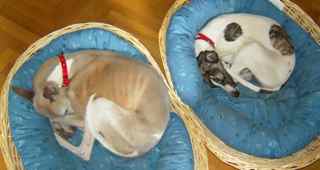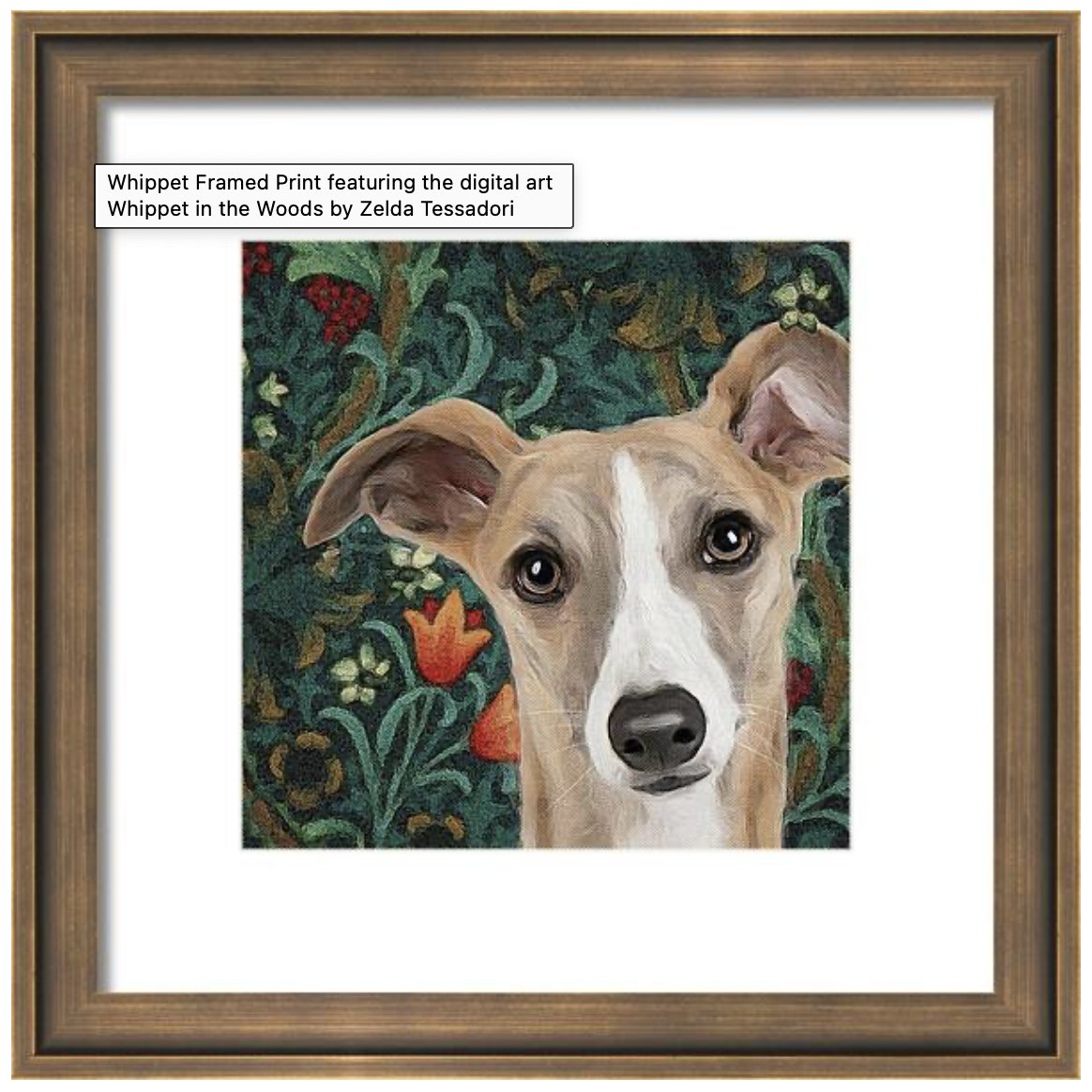Do you have a whippety question? Enter here your query or keyword.
- Home
- Whippet Puppies
- Puppy Crate Training Tips
7 Puppy Crate Training Tips for a Calm, House-Trained Companion
Follow these 7 puppy crate training tips to raise a well-adjusted, house-trained dog with minimal stress and maximum success—for both of you.
When we brought Lola, our new puppy, home, I felt surprisingly confident. I’d made my fair share of training mistakes with previous dogs, but this time I knew what worked and what didn’t. Potty training Lola was, thankfully, a breeze—and a big part of that success came from using the crate effectively from day one.
We picked Lola up with careful planning. My husband drove, and I sat in the back seat to keep our new pup calm. That plan worked well—until Lola, overwhelmed with nerves and motion sickness, vomited all over me. Welcome to puppy parenting!
Before we arrived home, I had already prepared the house and set up a quiet, safe space for Lola. The other pets were temporarily secured in a separate room so I could focus on our first important ritual: the initial potty break. As soon as we got home, I carried her straight to her designated toilet area. To my relief, she performed right away. Only after that success did I bring her inside.
We then took all the dogs to a neutral area—outside our garden—for formal introductions. These initial meetings are crucial, especially when you already have other pets. After a light dinner, the whole family, including Lola, was ready to collapse. I placed Lola in her crate for her first night, positioned near my bed and within sight of Zippo, my aging whippet. To our delight, she slept through the night with barely a whimper.
Now, the crate is her sanctuary. It’s where she rests when I can’t supervise her, where she sleeps at night, and where she happily goes after a long walk or active playtime. She’s come to associate it with peace, comfort, and safety.
Every two hours—after naps, meals, or play—I take Lola outside to her potty spot. She quickly learned that a successful performance outside meant returning indoors to her comfy crate or the rest of the house. Mistakes have been rare, and when they’ve happened, I’ve only had myself to blame for missing her cues or stretching the time between breaks.
Looking back, I can confidently say that crate training, done right, makes all the difference. If you’re about to welcome a new puppy or struggling with the one you already have, here are my 7 puppy crate training tips to help you build a routine that works.
1. Get Organized Before Bringing the Puppy Home
Preparation is everything. The moment your puppy walks through the door, your focus will be on keeping them safe and guiding their behavior—not running around looking for a crate or pee pads. Set up your crate in a quiet, comfortable area of the house before your puppy arrives. Stock up on treats, toys, and cleaning supplies. Trust me—once that puppy is home, there won’t be time to plan.

2. Have a Designated Toilet Area
Consistency is key. Pick one toilet area outdoors and always take your puppy to the same spot, using the same door and the same verbal cue. Puppies thrive on routine, and they’ll learn much faster if you stick to a predictable pattern from the beginning.

3. Begin Potty Training Immediately
Don't wait until your puppy has "settled in." House training begins the moment you get home. Take your puppy straight outside before introducing them to any room. Let them relieve themselves first, and then offer praise and maybe even a treat. This establishes the connection early: pottying outside = positive reward.
4. Start Crate Training on the First Night
This is one of the most important puppy crate training tips I can share. The first night sets the tone. It may be tempting to let your puppy sleep in bed with you or roam the room freely, but this only creates confusion. Instead, place the crate somewhere nearby so your puppy can hear and smell you. Add a soft blanket and maybe a toy that smells like home. A night or two of whimpers is normal, but puppies adjust quickly when they feel safe and secure.
5. Take Frequent Potty Breaks
One of the most common training mistakes is expecting too much too soon. Puppies have small bladders and little control. Take your puppy outside at least every two hours, and always after meals, naps, or play sessions. Each successful outdoor potty trip builds a good habit. Over time, your puppy will start to anticipate these breaks and hold it longer.
6. Prevent Mistakes Instead of Reprimanding
Punishment doesn’t work with puppies. In fact, it usually just confuses them. If your puppy has an accident indoors, it’s not because they’re being defiant—it’s because they weren’t given the chance to do it right. Set your puppy up for success by managing their environment. Use baby gates, close doors, and supervise them closely when they’re not in the crate. Prevention is your most powerful training tool.
7. Be Patient and Consistent
No matter how prepared you are, there will be setbacks. Progress isn’t always linear. One day your puppy might go all day without an accident—and the next they might forget everything and pee on the rug. Don’t panic. Stick to your routine, praise the good behavior, and remember that this phase doesn’t last forever. Consistency and patience are the magic ingredients to successful training.
Crate training isn’t just about confinement—it’s about giving your puppy a space that feels safe, predictable, and comfortable. A well-crate-trained puppy learns to settle down, enjoy quiet time, and sleep through the night without anxiety or mischief. It also makes house training dramatically easier by creating clear boundaries and minimizing accidents.
Puppy Crate Training Tips Final Thoughts
As you navigate these early weeks of puppy parenting, keep these puppy crate training tips close. They won’t just help with toilet training—they’ll build the foundation for a calm, confident, and well-mannered dog for years to come.
With a little planning and a lot of love, your crate can become the coziest corner of your puppy’s world—and one of your greatest tools for raising a happy, balanced companion.


